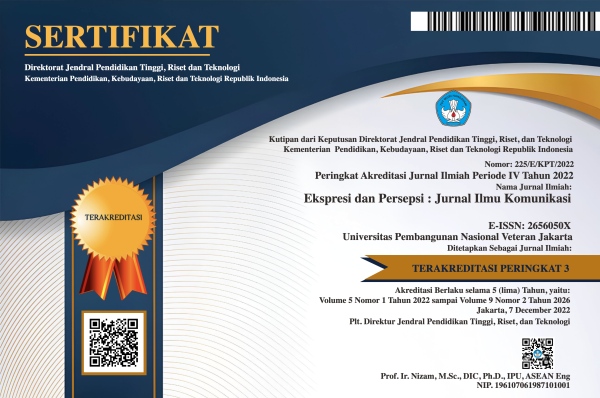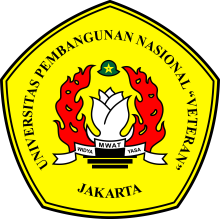The Use of Social Media in Adolescents as a Trigger for Bullying Behavior: A Study on High School Students in Bogor
DOI:
https://doi.org/10.33822/jep.v7i3.7643Keywords:
adolescent, bullying, family communication, social mediaAbstract
Bullying that occurs at the high school level is very urgent to get an immediate solution. This is considering that high school students are potential successors to development. Indonesia will enter the golden period, in 2045. Adolescents who are free from bullying will be ready to participate in development. Internet media is one of the triggers for bullying. Therefore, it is very important to know the use of adolescent internet media in relation to bullying.This study analyzes the relationship between adolescent social media use and bullying behavior among high school students in Bogor City. Data was collected from 100 respondents with an age range of 17-19 years, consisting of 57% women and 43% men. The analysis showed a significant relationship between adolescent characteristics and communication with peers (β = 3.225), as well as a relationship between adolescent characteristics and social media use (β = 1.835). In addition, a relationship was also found between adolescent characteristics and bullying behavior (β = 0.780). These results underscore the importance of paying attention to factors such as adolescent characteristics and interaction with social media in understanding bullying behavior among adolescents. These findings highlight the need for a holistic approach to the prevention and management of bullying behaviors that includes parental supervision as well as a better understanding of adolescents' social media use. Social media has a significant role in shaping adolescents' attitudes regarding bullying, family communication contributes to the occurrence of bullying behavior in adolescents.
References
Abdullah, N. (2013). Meminimalisasi bullying di sekolah. Jurnal Magistra, 25(83), 50–55.
Adi, F., & Solihin, O. (2022). Peran Komunikasi Keluarga Dalam Penyiapan Kehidupan Berkeluarga Bagi Remaja Untuk Mencegah Maslah Gizi Pada Balita (Stunting). Jurnal
Agregasi: Aksi Reformasi Government Dalam Demokrasi, 10(2), 108–119.
Ashari, N., Saliem, H. P., Maulana, M., Ariningsih, E., & Septanti, K. S. (2020). The Determinants of Sustainable Agricultural Technology Adoption. Forum Penelitian Agro Ekonomi, 38(1),
https://doi.org/10.21082/fae.v38n1.2020.1-11
Berryman, C., Ferguson, C. J., & Negy, C. (2018). Social Media Use and Mental Health among
Young Adults. Psychiatric Quarterly, 89(2), 307–314. https://doi.org/10.1007/s11126-
-9535-6
Craig, W., Boniel-Nissim, M., King, N., Walsh, S. D., Boer, M., Donnelly, P. D., Harel-Fisch, Y.,
Malinowska-Cieślik, M., Gaspar De Matos, M., Cosma, A., Van Den Eijnden, R., Vieno, A., Elgar, F. J., Molcho, M., Bjereld, Y., & Pickett, W. (2020). Social Media Use and Cyber- Bullying: A Cross-National Analysis of Young People in 42 Countries. Journal of Adolescent Health, 66(6), S100–S108. https://doi.org/10.1016/j.jadohealth.2020.03.006
Deepa, M., & Priya, V. K. (2020). Impact of social media on mental health of students. International Journal of Scientific & Technology Research, 9(3), 3796–3800.
Dwipayanti, I. A. S., & Indrawati, K. R. (2014). Hubungan antara tindakan bullying dengan prestasi belajar anak korban bullying pada tingkat sekolah dasar. Jurnal Psikologi Udayana, 1(2), 251–260.
Ema, P. S. N. (2021). Dinamika Psikologi Remaja Dalam Menggunakan Media Sosial Di Desa Jotosanur Kecamatan Tikung Lamongan [Doctoral dissertation]. IAIN Kediri.
Kemp, S. (2020). Global Digital Insights [Digital]. datareportal.com. https://datareportal.com/reports/digital-2020- indonesia?rq=digital
Mahendra, I. T. (2017). Peran media sosial instagram dalam pembentukan kepribadian remaja usia 12-17 tahun di Kelurahan Kebalen Kecamatan Babelan Kabupaten Bekasi [Bachelor’s thesis]. UIN Syarif Hidayatullah.
Muharul, R., Lubis, DP., Puspitawati, H., Muljono, P., (2023). Komunikasi Anggota
Naslund, J. A., Bondre, A., Torous, J., & Aschbrenner, K. A. (2020). Social Media and Mental Health: Benefits, Risks, and Opportunities for Research and Practice. Journal of Technology in Behavioral Science, 5(3), 245–257. https://doi.org/10.1007/s41347-020-
-x
Novyarni, N., Mais, R. G., Aprileny, I., Maserih, M., & Sumitro, S. (2021). The Bullying dan Mental
Siswa: Peran Keluarga Dalam Pandangan Islam. BERDAYA: Jurnal Pendidikan Dan
Pengabdian Kepada Masyarakat, 3(1), 17–24. https://doi.org/10.36407/berdaya.v3i1.305 Nugraha, A. F. (2023, May 29). Kasus Kekerasan Anak Masih Tinggi di Kota Bogor.
RRISPRINT.
O’Keeffe, G. S., Clarke-Pearson, K., & Council on Communications and Media. (2011). The
Impact of Social Media on Children, Adolescents, and Families. Pediatrics, 127(4), 800–
https://doi.org/10.1542/peds.2011-0054
Olson, L. N., Baiocchi-Wagner, E. A., Wilson-Kratzer, J. M., & Symonds, S. M. (2012). The dark
side of family communication. Polity Press.
Primadini, I., & Setianoto, F. A. (2024). Authoritarian Parenting Practices on Korean Drama:
Reception Analysis on SKY Castle. EKSPRESI DAN PERSEPSI : JURNAL ILMU KOMUNIKASI, 7(2), 272–290. https://doi.org/10.33822/jep.v7i1.6093 https://doi.org/10.33822/jep.v6i3.6179
Saiful, J. Ali. (2019). EFL teachers’ cognition in the use of Youtube Vlog in English language teaching. Journal of Foreign Language Education and Technology, 4(1), 72–91.
Solihin, O., & Abdullah, A. (2023). Komunikasi Kesehatan Era Digital: Teori dan Praktek. Prenada Media.
Suciartini, N. N. A., & Sumartini, N. L. P. U. (2018). Verbal bullying dalam media sosial ditinjau dari perspektif penyimpangan prinsip kesantunan berbahasa. Ganaya: Jurnal Ilmu Sosial Dan Humaniora, 1(1), 104–134.
Sujadi, E., Yandri, H., & Juliawati, D. (2021). Perbedaan Resiliensi Siswa Laki-laki dan Perempuan yang Menjadi Korban Bullying. Psychocentrum Review, 3(2), 174–186. https://doi.org/10.26539/pcr.32665
Syah, R., & Hermawati, I. (2018). Upaya pencegahan kasus cyberbullying bagi remaja pengguna media sosial di Indonesia. Jurnal Penelitian Kesejahteraan Sosial, 17(2), 131–146.
Tambunan, R. M., Hanafi, D., & Ibrahim, F. (2024). The Influence of Family Communication Patterns on Parenting Agreements for Children with Special Needs. LONTAR: Jurnal Ilmu Komunikasi, 12(1), 274–283. https://doi.org/10.30656/lontar.v12i1.7969
Tanrıkulu, I. (2015). The relationships between cyber bullying perpetration motives and personality traits: Testing uses and gratifications theory. [Doctoral dissertation]. Middle East Technical University.
Downloads
Published
Issue
Section
License
Copyright (c) 2024 Ratih Siti Aminah

This work is licensed under a Creative Commons Attribution-NonCommercial 4.0 International License.














